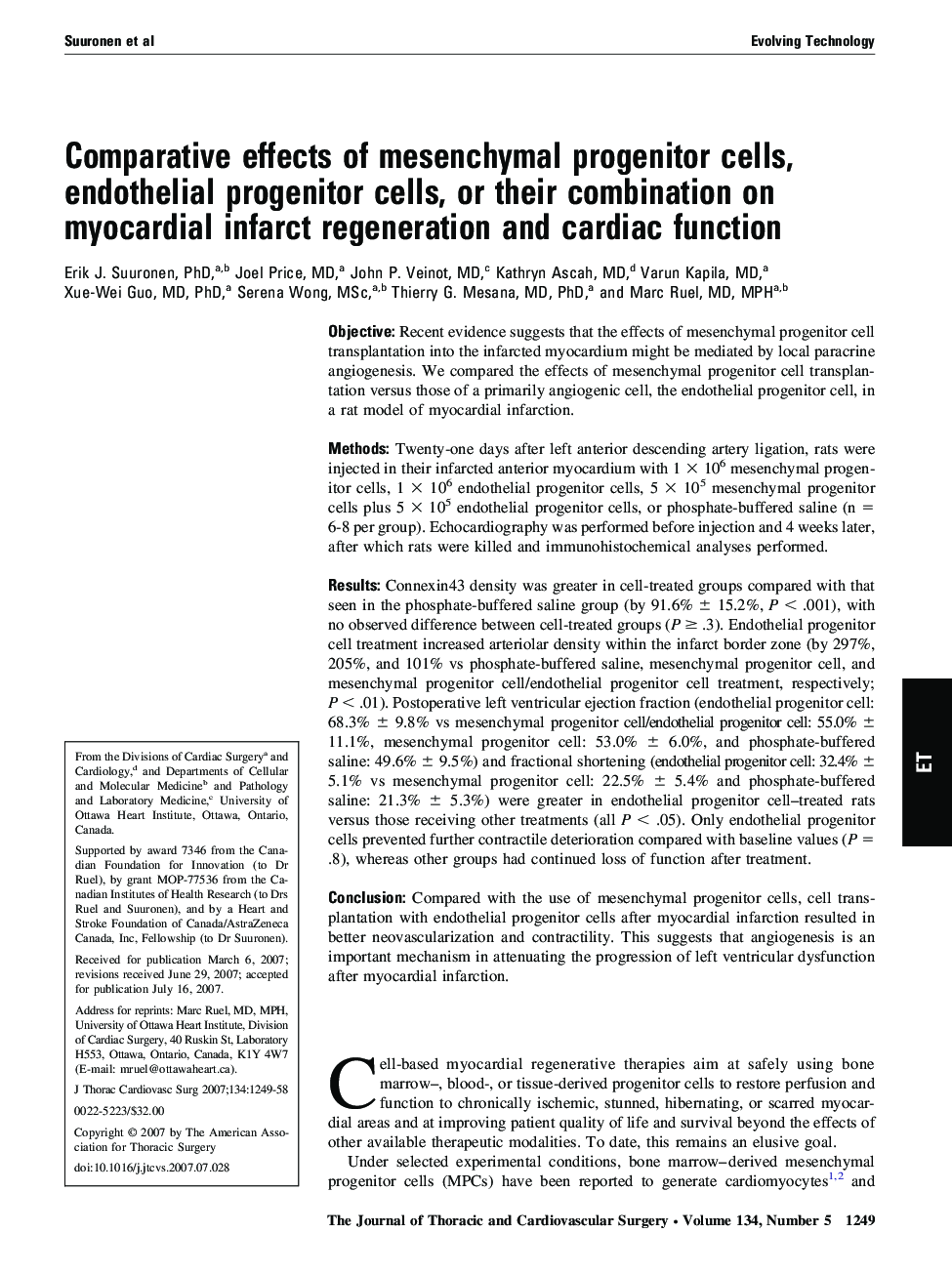| کد مقاله | کد نشریه | سال انتشار | مقاله انگلیسی | نسخه تمام متن |
|---|---|---|---|---|
| 2986773 | 1578692 | 2007 | 10 صفحه PDF | دانلود رایگان |

ObjectiveRecent evidence suggests that the effects of mesenchymal progenitor cell transplantation into the infarcted myocardium might be mediated by local paracrine angiogenesis. We compared the effects of mesenchymal progenitor cell transplantation versus those of a primarily angiogenic cell, the endothelial progenitor cell, in a rat model of myocardial infarction.MethodsTwenty-one days after left anterior descending artery ligation, rats were injected in their infarcted anterior myocardium with 1 × 106 mesenchymal progenitor cells, 1 × 106 endothelial progenitor cells, 5 × 105 mesenchymal progenitor cells plus 5 × 105 endothelial progenitor cells, or phosphate-buffered saline (n = 6-8 per group). Echocardiography was performed before injection and 4 weeks later, after which rats were killed and immunohistochemical analyses performed.ResultsConnexin43 density was greater in cell-treated groups compared with that seen in the phosphate-buffered saline group (by 91.6% ± 15.2%, P < .001), with no observed difference between cell-treated groups (P ≥ .3). Endothelial progenitor cell treatment increased arteriolar density within the infarct border zone (by 297%, 205%, and 101% vs phosphate-buffered saline, mesenchymal progenitor cell, and mesenchymal progenitor cell/endothelial progenitor cell treatment, respectively; P < .01). Postoperative left ventricular ejection fraction (endothelial progenitor cell: 68.3% ± 9.8% vs mesenchymal progenitor cell/endothelial progenitor cell: 55.0% ± 11.1%, mesenchymal progenitor cell: 53.0% ± 6.0%, and phosphate-buffered saline: 49.6% ± 9.5%) and fractional shortening (endothelial progenitor cell: 32.4% ± 5.1% vs mesenchymal progenitor cell: 22.5% ± 5.4% and phosphate-buffered saline: 21.3% ± 5.3%) were greater in endothelial progenitor cell–treated rats versus those receiving other treatments (all P < .05). Only endothelial progenitor cells prevented further contractile deterioration compared with baseline values (P = .8), whereas other groups had continued loss of function after treatment.ConclusionCompared with the use of mesenchymal progenitor cells, cell transplantation with endothelial progenitor cells after myocardial infarction resulted in better neovascularization and contractility. This suggests that angiogenesis is an important mechanism in attenuating the progression of left ventricular dysfunction after myocardial infarction.
Journal: The Journal of Thoracic and Cardiovascular Surgery - Volume 134, Issue 5, November 2007, Pages 1249–1258